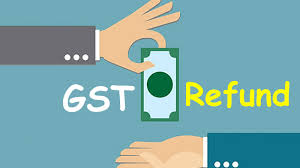The Goods and Services Tax (GST) in India was introduced to streamline the indirect taxation system by combining various state and central taxes into a single tax structure. Among the many provisions under GST, GST refund is one that significantly benefits taxpayers by ensuring that they are not burdened with excess tax payments. If you have paid more GST than required, or if you are eligible for a refund due to exports or inverted duty structure, you can claim a refund. However, once you’ve applied, the next critical step is tracking your GST refund status.
Whether you’re a business owner, exporter, or a service provider, knowing how to check your refund status is crucial for managing your cash flow. In this guide, we’ll explore where and how to check your refund status, what types of refunds are available, and the steps to ensure a smooth refund process.
Where to Check GST Refund Status
The Government of India has made it easy for taxpayers to check their GST refund status online. The entire process is managed through the GST portal, which is accessible to all registered users.
You can check your refund status:
- On the GST Portal under the ‘Track Application Status’ section.
- Through your GST dashboard using your GSTIN (GST Identification Number).
- By accessing the pre-login and post-login sections of the portal.
- Via the ARN (Application Reference Number) received after applying for the refund.
Before proceeding, make sure your GST registration is active and your refund claim has been submitted correctly.
Advantages of GST Refund
- Improved Liquidity: GST refunds provide working capital relief, especially for exporters and businesses with large input tax credits.
- Simplified Process: The online GST portal streamlines the application and tracking process, reducing manual paperwork.
- Timely Processing: As per law, refunds are to be processed within 60 days, ensuring timely returns.
- Transparency: With an online tracking system, businesses can monitor the status in real-time, minimizing uncertainty.
- Legal Entitlement: Registered taxpayers are legally entitled to claim and receive refunds for eligible transactions.
Understanding Status Types
- Filed: Your refund application has been submitted successfully.
- Processing: The application is under review by GST officers.
- Approved: Your refund has been approved.
- Rejected: Your refund claim was denied. Reasons will be listed.
- Payment Order Issued: The refund is ready to be credited.
- Credited to Bank: Refund amount has been credited to your bank account.
Types of GST Refunds
There are several scenarios under which a taxpayer can apply for a GST refund:
- Excess Tax Paid
If you’ve paid more GST than due, you can claim the excess amount as a refund.
- Export of Goods and Services
Exporters are eligible for a GST refund either on zero-rated supply or input tax credit (ITC) used for making exports.
- Inverted Duty Structure
When the rate of tax on inputs is higher than the rate on output supplies, taxpayers can claim a refund on the unutilized input tax credit.
- Finalization of Provisional Assessment
If your GST was paid provisionally and later finalized at a lower amount, you can claim a refund of the difference.
- Deemed Exports
Suppliers providing goods under deemed export provisions (such as supplies to SEZ units) are eligible for refunds.
- Refund to International Tourists
Foreign tourists are entitled to claim a refund on GST paid on goods purchased during their stay in India.
- Refund on Account of Year-End or Volume-Based Discounts
If post-sale discounts reduce the value of supply, businesses may seek GST refund adjustments.
Conclusion
Knowing how to check your GST refund status is essential for every registered taxpayer in India. The GST portal makes the process simple and transparent, allowing businesses to track their refund applications in real time. With various refund categories—ranging from exports to excess tax payments—the system is designed to support businesses and maintain healthy liquidity.
Ensure your GST registration is up-to-date, and maintain accurate documentation to facilitate a smoother refund process. Prompt action and regular tracking can help avoid delays and unlock your entitled refunds faster.
FAQs
- What is ARN in the GST refund application?
ARN (Application Reference Number) is a unique number generated after submitting a refund application. It is used to track the refund status on the GST portal.
- How long does it take to get a GST refund?
As per GST norms, refunds are to be processed within 60 days from the date of application. However, delays may occur if there are discrepancies in the application or documentation.
- Can I check refund status without logging in?
Yes, you can check the refund status using your ARN on the GST portal without logging in.
- What happens if my refund is rejected?
If your GST refund application is rejected, the reason will be mentioned in the status update. You can reapply after correcting the errors or file an appeal.
- What are the documents required for a GST refund?
Common documents include:
- GSTR-1 and GSTR-3B filings
- Export invoices (for exporters)
- Bank account proof
- Copy of shipping bill (for exports)
- Declaration for non-passing of tax burden
- What if I don’t receive the refund after approval?
If your refund is approved but not credited, contact your jurisdictional GST officer or raise a complaint through the GST helpdesk.
- Is GST refund taxable?
No, GST refund is not considered income and hence, not taxable. It is a return of excess tax paid.
- Can an unregistered person claim a GST refund?
No. Only those with valid GST registration can apply for and claim a GST refund.
